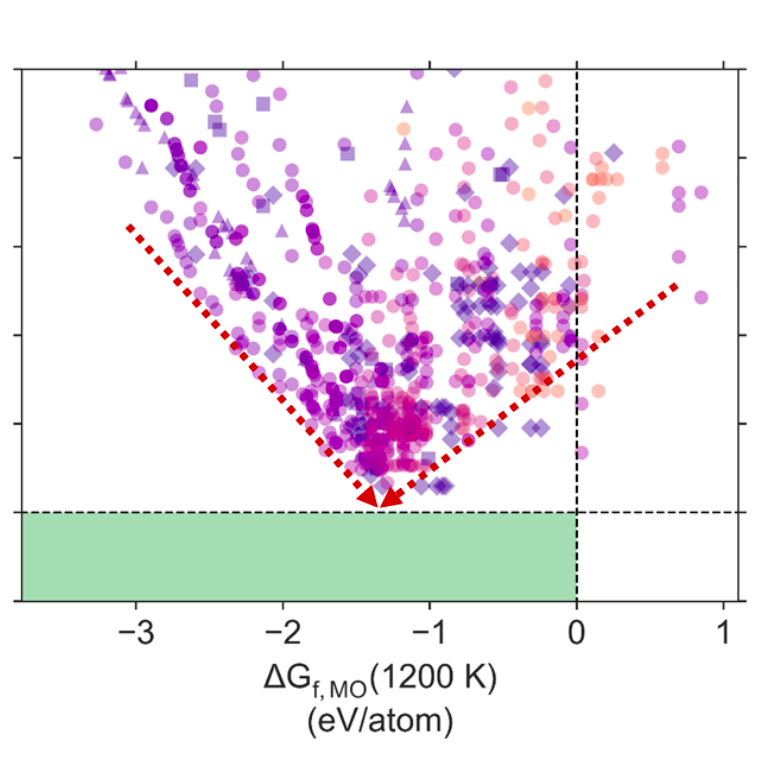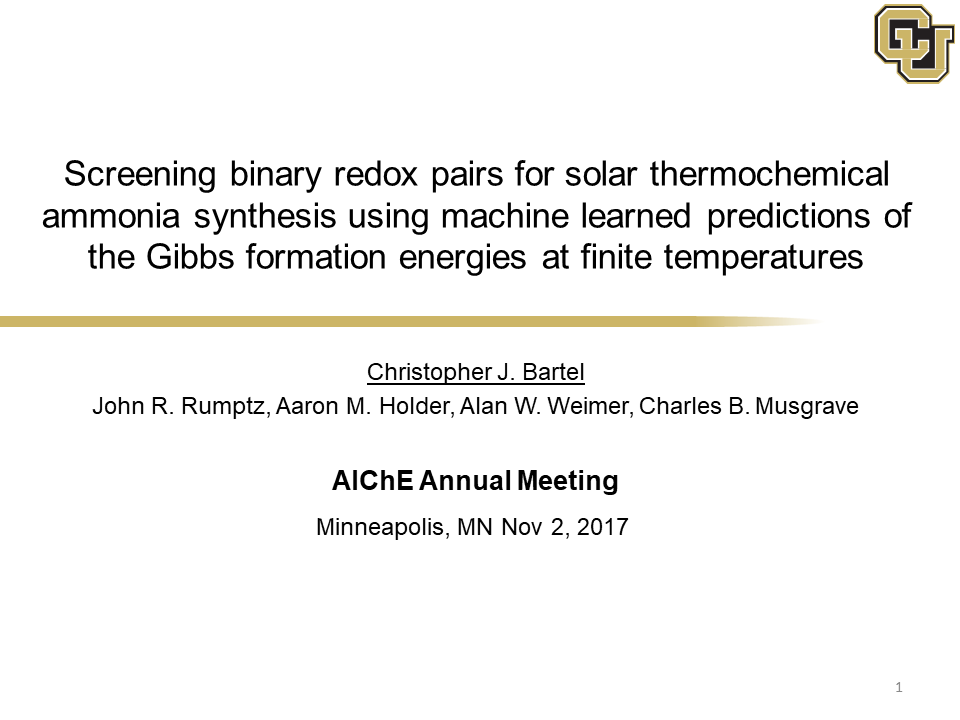I wrote recently about two pathways for ammonia production technology development: improvements on Haber-Bosch, or electrochemical synthesis. Last week, I covered some of these Haber-Bosch improvements; next week, I'll write about electrochemical processes. This week, I want to write about some innovations that don't fit this two-way categorization: they don't use electrochemistry and they don't build upon the Haber-Bosch process, and that might be the only thing that links them.
Content Related to University of Colorado
Presentation
Screening Binary Redox Pairs for Solar Thermochemical Ammonia Synthesis Using Machine Learned Predictions of Gibbs Formation Energies at Finite Temperatures
Solar thermochemical ammonia synthesis (STAS) is a reduction/oxidation (redox) cycle which enables the production of ammonia (NH3) from air, water, and concentrated sunlight. In this process, a metal nitride (MN) is oxidized by steam to produce a metal oxide (MO) and NH3; the resulting MO is reduced at high temperature (driven by concentrated solar radiation) and subsequently used to reduce atmospheric nitrogen (N2) and reform the MN and restart the NH3 synthesis cycle. The identification of optimal redox pairs (MO/MN) for this process has been historically limited by the lack of thermochemical data (i.e., Gibbs formation energies at finite temperatures)…
Article
Next-generation ammonia tech: biohybrid nanoparticles
Trevor Brown August 02, 2017
Sustainable ammonia can be produced today: doing so would use electrolyzers to make hydrogen to feed the traditional Haber-Bosch process. In a very few years, new technologies will skip this hydrogen production phase altogether and make ammonia directly from renewable power in an electrochemical cell. Further down the pipeline, next generation technologies will mimic nature, specifically the nitrogenase enzyme, which produces ammonia naturally. One of these next generation technologies is currently producing impressive results at the US Department of Energy's (DOE) National Renewable Energy Laboratory (NREL).


